We'd arrived at the historical Burra Mine site during yesterday's Burra Heritage Passport tour after the opening time for the Morphett's Enginehouse Museum and so that was our first port of call before visiting the nine remaining points of interest we didn't have time to see yesterday. As its name suggests, the Museum is housed in the restored Morphett's Enginehouse. It was built in 1858 for the 80 inch diameter Cornish atmospheric beam engine, the purpose of which was to pump water from the mine as operations underground extended well below the natural water table. It commenced pumping in 1860 and ceased operation in 1877, with the engine being removed for scrap in 1916. A fire destroyed much of the remainder in 1925, but in 1986 as part of the Jubilee 150 project (celebrating 150 years of European settlement in South Australia), the enginehouse was reconstructed and the shaft retimbered. It seems for a while after that tourists could view the shaft by entering the original adit, but now access is limited to above ground areas.
Internal stairs provide access to the three level within the enginehouse and at the top level you can go out on a viewing platform where the 32 ton beam going up and down at 8 strokes per minute would have been, providing great views over the remains of the mining operation
. Of course the large open cut pit is a prominent feature, however at first all mining took place underground. Open cut operation began in 1870 in an attempt to extract lower grade ore profitably, however low copper prices forced the Burra mine to close in 1877. The mine remained abandoned for nearly a century until open cut mining started again in 1971 and continued until exhaustion of ore in 1981. Adjacent to the enginehouse is Morphett's Windinghouse and one of the original boilers which was returned to its original site after being recovered from Adelaide where it had been converted into an oil storage tank.
As an aside, the water which has returned to fill the open cut pit is now put to use as a venue for conducting deep sea diving training. The guide told us it had one good advantage in that they didn't have to worry about sharks!
We left the mine site and continued on to complete our Burra Heritage Passport tour
. While there are many beautiful stone free standing and row houses in Burra that may have previously been miners accommodation, out next stop at the last two remaining miner's dug outs in the bank of the Bura Creek showed what a contrast there must have been in housing at the time. We noted on the storyboard there that during a census which showed Burra had a total population of 4400, some 1800 were living in dug outs along the creek.
When we'd completed the tour we dropped into the Regional Council of Goyder Chambers on Burra Market Square where they have a display of fossils of a Diprotodon found in the nearby Red Banks Conservation Park. The Diprotodon was the world's largest marsupial and became extinct some 50,000 years ago. Incidentally Market Square is a very picturesque centre of Burra and it's worth noting that Burra is really a collection of old townships, such as Kooringa, Redruth, Adberdeen, Llwchwr and Hampton. The name Burra was officially adopted in 1940 to include these.
We packed a picnic sandwich lunch and headed out to Bura Creek Gorge, some 20km South. Here we found a number of caravanners/campers free camping is an idylic setting beside the Burra Creek, which like much of the Creek elsewhere was pretty much dry. It was very pleasant sitting, listening and watching many birds. After eating our lunch we walked further down the gorge, however our progress was halted when we unexpectedly found water across the track.
Returning to Burra we found a memorial on the roadside which identified the location of Thomas Pickett's shepherd's hut. Thomas Pickett was the shepherd who made the original discovery of copper in the area which led to the opening of the Burra Burra Mine on 29 September 1845. From accounts of the discovery and development of copper mines at Burra we have read elsewhere during our time here it seems clear Pickett never received remuneration appropriate to the value of his discovery to the mining companies which benefited.
So over the last couple of days we've learned a lot about the history of Burra, obviously dominated by mining. Tomorrow we head towards home on the penultimate day of our holiday and will overnight at Bordertown.
Dinner was Thai fish cakes (which we'd bought from Port Lincoln frozen) with pasta salad, followed by banana and icecream.
Morphett's Enginehouse Museum & Burra Creek Gorge
Tuesday, September 22, 2015
 Burra, South Australia, Australia
Burra, South Australia, Australia
Other Entries
-
7Flinders Ranges from the air
Sep 0517 days prior Hawker, Australiaphoto_camera11videocam 0comment 0
Hawker, Australiaphoto_camera11videocam 0comment 0 -
8Blinman and the Brachina Gorge
Sep 0616 days prior Hawker, Australiaphoto_camera14videocam 0comment 0
Hawker, Australiaphoto_camera14videocam 0comment 0 -
9Hawker & Wilpena Resort
Sep 0715 days prior Hawker, Australiaphoto_camera11videocam 0comment 0
Hawker, Australiaphoto_camera11videocam 0comment 0 -
10Wilpena to Woomera
Sep 0814 days prior Woomera, Australiaphoto_camera13videocam 0comment 0
Woomera, Australiaphoto_camera13videocam 0comment 0 -
11Roxby Downs & Andamooka
Sep 0913 days prior Woomera, Australiaphoto_camera10videocam 0comment 0
Woomera, Australiaphoto_camera10videocam 0comment 0 -
12Woomera to Kimba
Sep 1012 days prior Kimba, Australiaphoto_camera7videocam 0comment 0
Kimba, Australiaphoto_camera7videocam 0comment 0 -
13Kimba to Streaky Bay
Sep 1111 days prior Streaky Bay, Australiaphoto_camera8videocam 0comment 0
Streaky Bay, Australiaphoto_camera8videocam 0comment 0 -
14Cape Bauer Loop & Murphy's Haystacks
Sep 1210 days prior Streaky Bay, Australiaphoto_camera11videocam 0comment 0
Streaky Bay, Australiaphoto_camera11videocam 0comment 0 -
15Streaky Bay to Elliston
Sep 139 days prior Elliston, Australiaphoto_camera9videocam 0comment 0
Elliston, Australiaphoto_camera9videocam 0comment 0 -
16Sights around Elliston
Sep 148 days prior Elliston, Australiaphoto_camera13videocam 0comment 0
Elliston, Australiaphoto_camera13videocam 0comment 0 -
17Elliston to Port Lincoln
Sep 157 days prior Port Lincoln, Australiaphoto_camera8videocam 0comment 0
Port Lincoln, Australiaphoto_camera8videocam 0comment 0 -
18Housekeeping day at Port Lincoln
Sep 166 days prior Port Lincoln, Australiaphoto_camera8videocam 0comment 0
Port Lincoln, Australiaphoto_camera8videocam 0comment 0 -
19Koppio Smithy Museum
Sep 175 days prior Port Lincoln, Australiaphoto_camera7videocam 0comment 0
Port Lincoln, Australiaphoto_camera7videocam 0comment 0 -
20Port Lincoln to Port Augusta
Sep 184 days prior Port Augusta, Australiaphoto_camera10videocam 0comment 0
Port Augusta, Australiaphoto_camera10videocam 0comment 0 -
21Pichi Richi Railway
Sep 193 days prior Port Augusta, Australiaphoto_camera10videocam 1comment 0
Port Augusta, Australiaphoto_camera10videocam 1comment 0 -
22Port Augusta to Burra
Sep 202 days prior Burra, Australiaphoto_camera8videocam 0comment 0
Burra, Australiaphoto_camera8videocam 0comment 0 -
23Burra Heritage Passport tour
Sep 211 day prior Burra, Australiaphoto_camera9videocam 0comment 0
Burra, Australiaphoto_camera9videocam 0comment 0 -
24Morphett's Enginehouse Museum & Burra Creek Gorge
Sep 22 Burra, Australiaphoto_camera10videocam 0comment 0
Burra, Australiaphoto_camera10videocam 0comment 0 -
25Burra to Bordertown
Sep 231 day later Bordertown, Australiaphoto_camera6videocam 0comment 0
Bordertown, Australiaphoto_camera6videocam 0comment 0 -
26Bordertown to Home in Ringwood
Sep 242 days later Ringwood, Australiaphoto_camera7videocam 0comment 0
Ringwood, Australiaphoto_camera7videocam 0comment 0

 Burra, South Australia, Australia
Burra, South Australia, Australia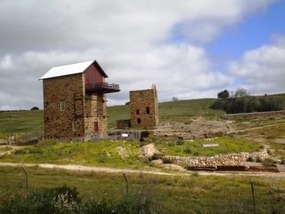
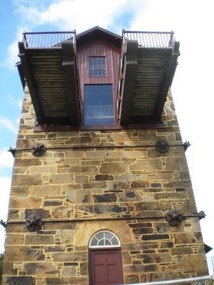

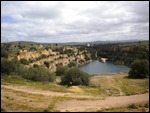
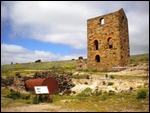
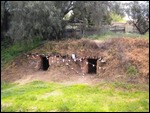
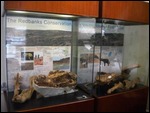
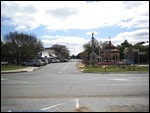
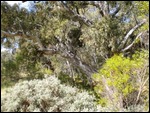
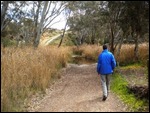
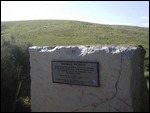
2025-05-22